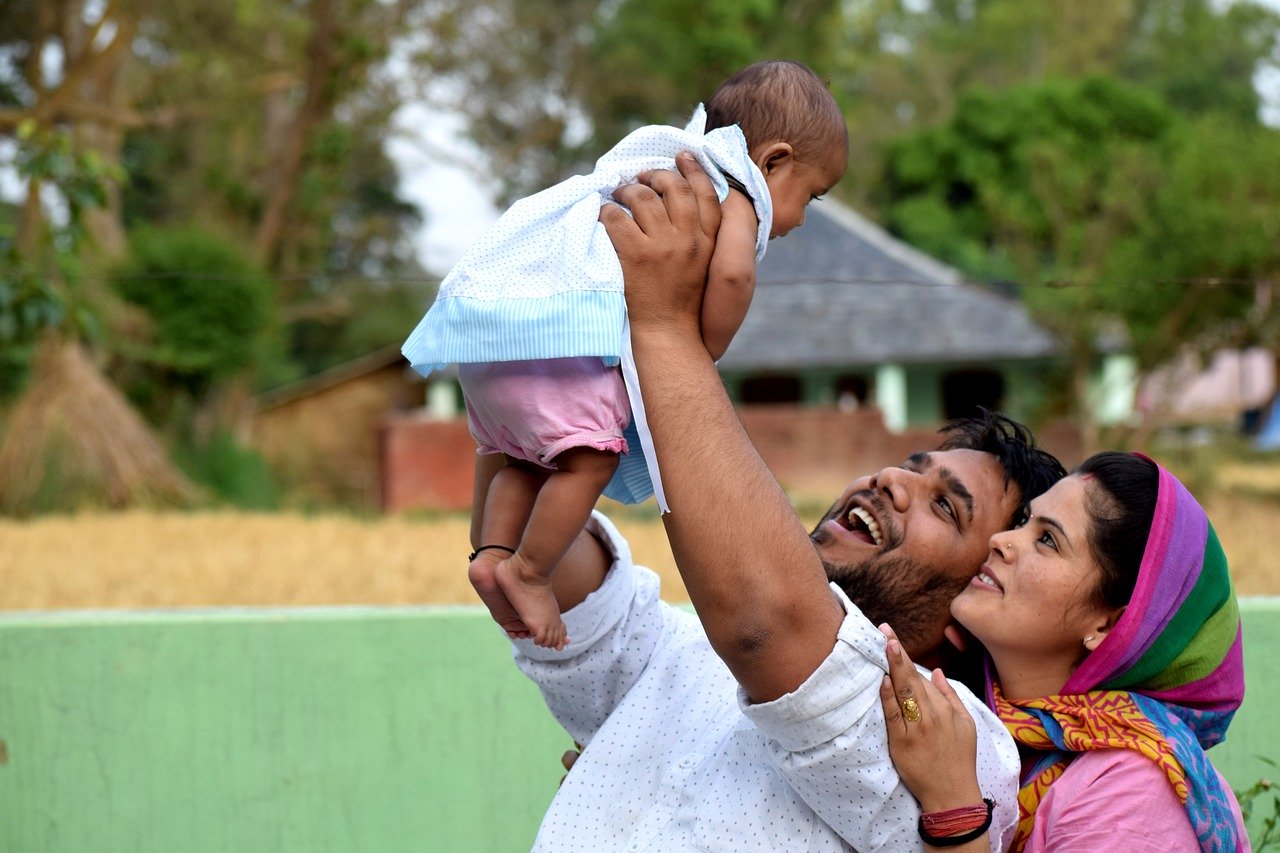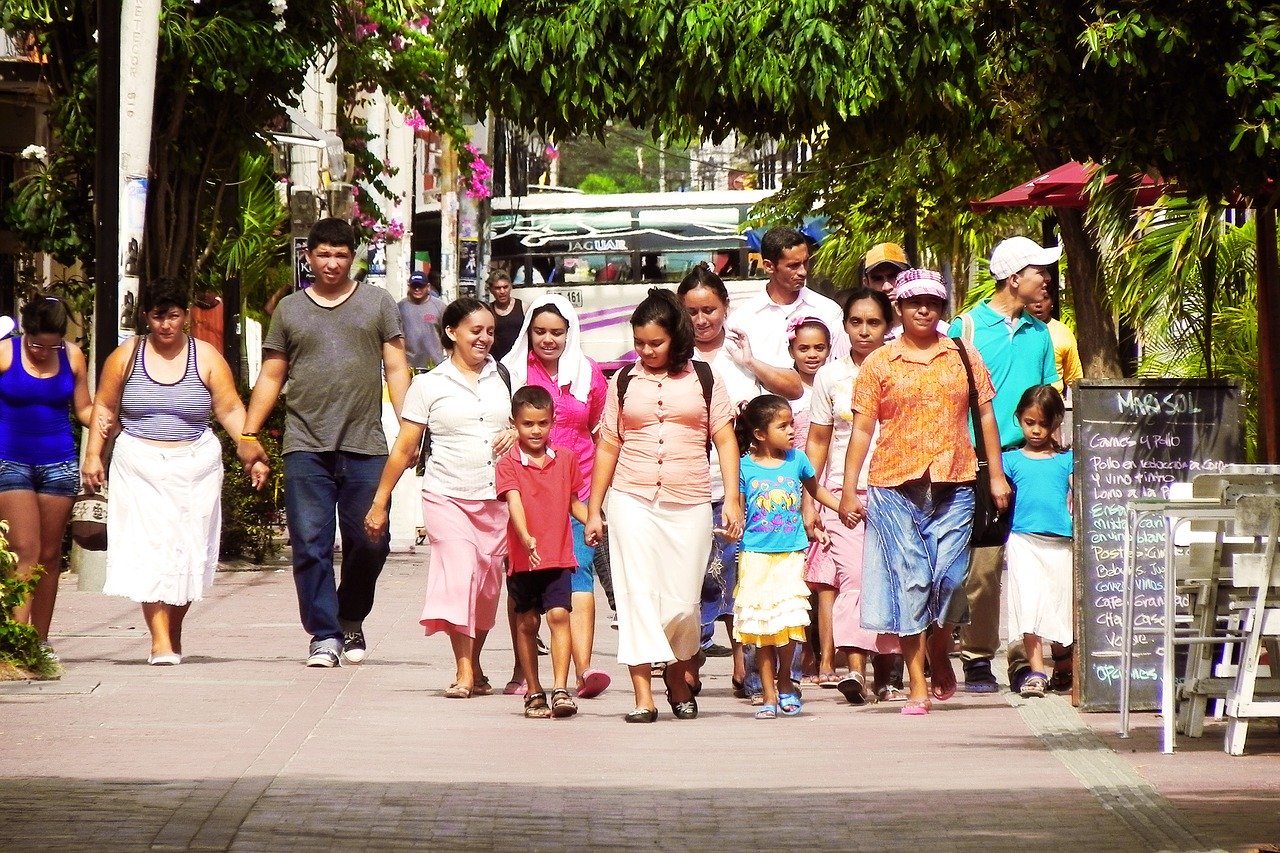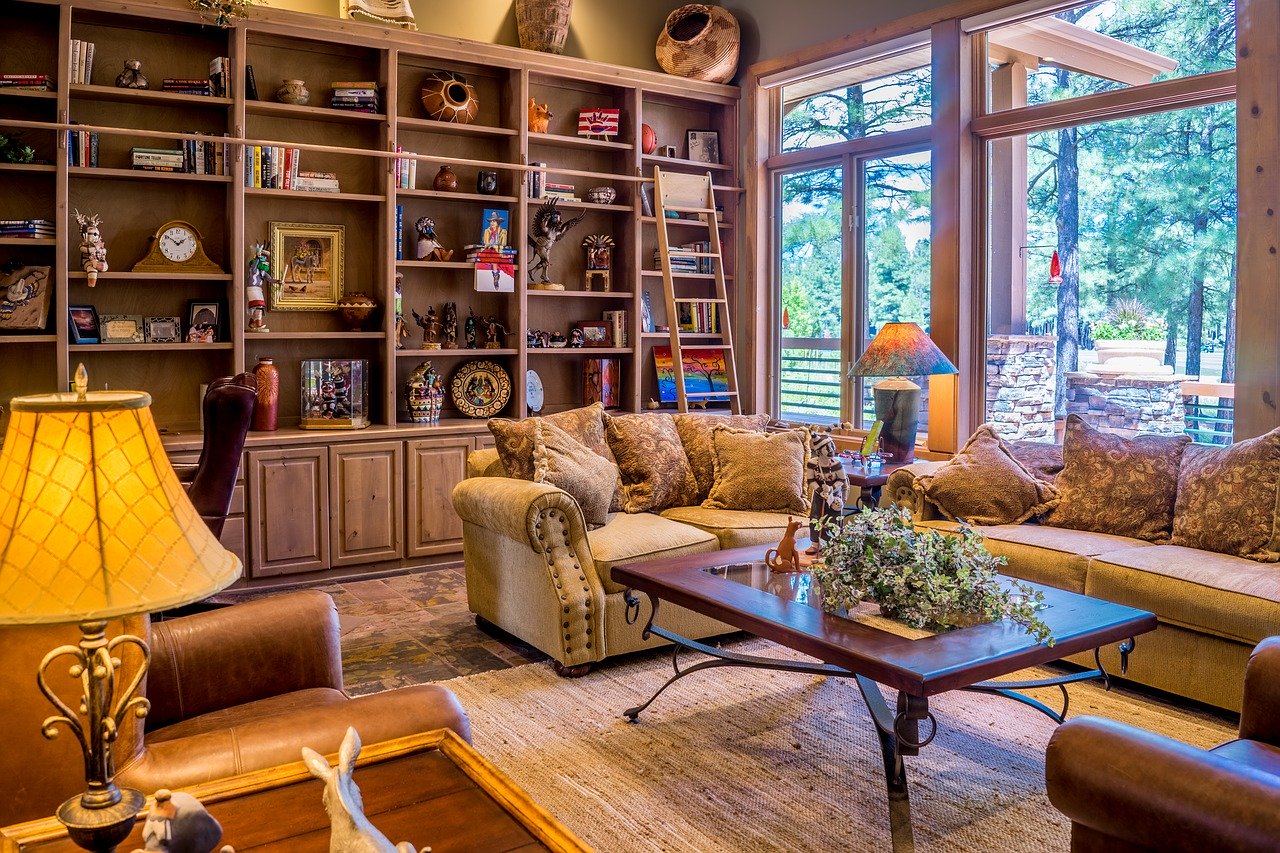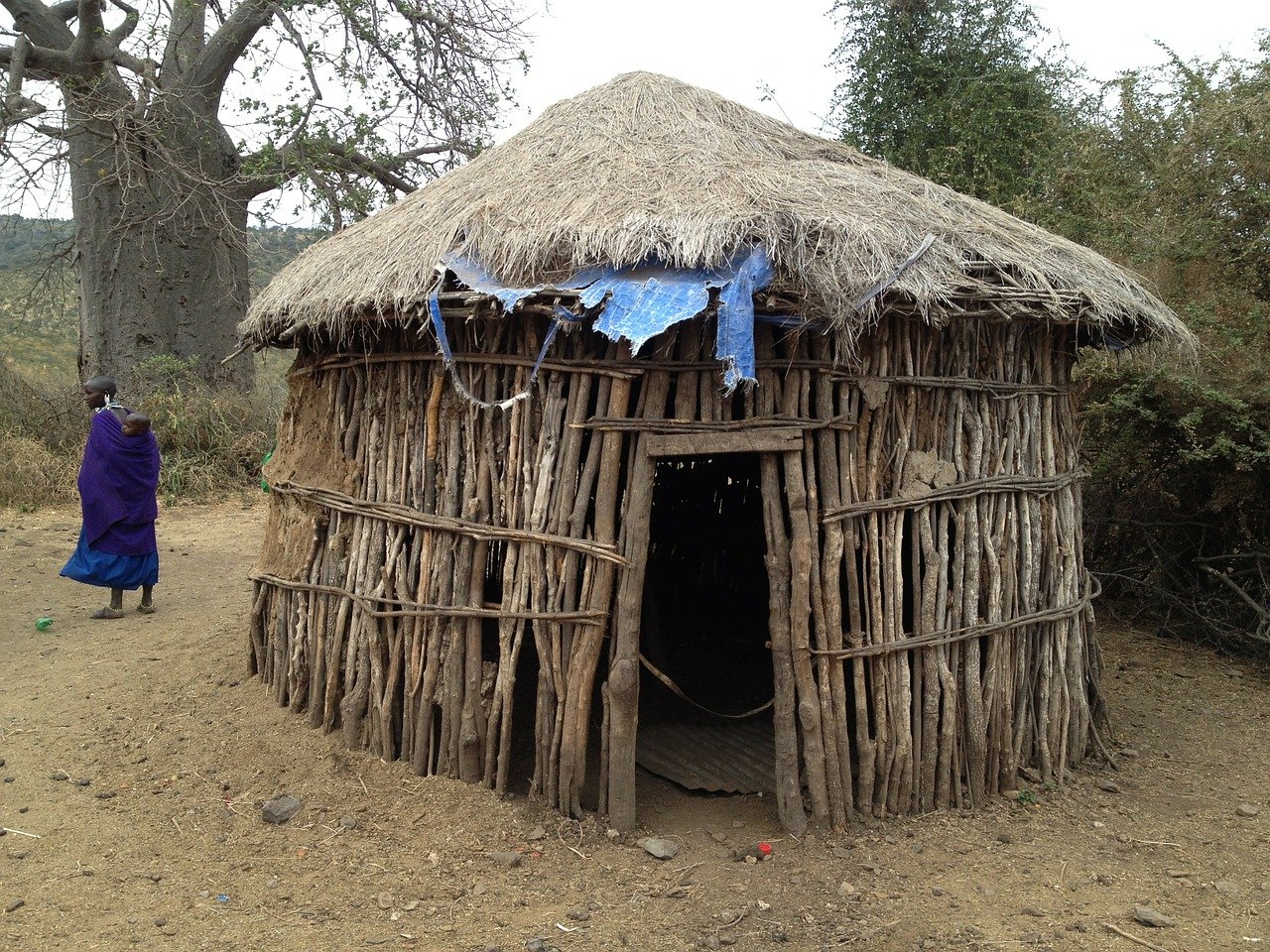
By Francine Barone
Settlements are central to human development, making shelter, dwellings, and residence patterns necessary foci of investigation in both anthropology and archaeology. This article seeks to address a related and easily overlooked aspect of this anthropological concern: when is a house a home? Is “home” recognized in the same ways around the world?
In her broad, cross-disciplinary review of the literature on the concept of home, Mallet argues that “shelter is described as simply one aspect of home. Moreover, it is generally recognized that the relationships between the terms house and home must be established in varying cultural and historical contexts” (2004: 68). As a comparative science, anthropology is ideally placed to explore this relationship across cultures. While finding in her review of the literature that home is “variously described as conflated with or related to house, family, haven, self, gender, and journeying”, Mallet also asks: “is home (a) place(s), (a) space(s), feeling(s), practices, and/or an active state of state of being in the world (ibid. 65)?”
Following this inquisitive approach to understanding houses, homes, and households as spaces that traverse time, place, and social status, this post utilizes the ethnographic data contained in the eHRAF World Cultures database to uncover any cultural commonalities or differences regarding what constitutes “home”. Whatever a house looks like from the outside, it is clear by the range of meanings proposed by Mallet that a home can be much more than a built structure. Consider what it means for one to feel “at home”. Does such an ephemeral concept require a permanent physical structure, or can home be made and remade at any time and place in one’s life?
Inside house and home
We can begin exploring this dynamic by offering a simple, everyday reckoning of a house: a building intended to provide shelter for human habitation; typically holding possessions as well as persons; decorated and spatially designated in both interior and exterior; by which an otherwise empty space is transformed into a residential one. Some societies – readily recognizable as the norm in the West – may value the privacy of the house as an intimate space for nuclear families, with distinct rooms each serving a purpose, and a strong locking door to separate the exterior/“street” from the interior/“home” (Barone 2010).
Yet the establishment of a house (and, as will be shown below, a home) is not always strictly a family affair. It takes place within wider inhabited surrounds, and the spatial layout and design of the dwelling vis-à-vis neighbors is a fundamental building block of the social landscape. Some societies may orientate their houses towards a communal center (see, for example, Kroeber 1917: 153), with fewer restrictions on hospitality for more extended familial connections or other visitors. In this way, the radius of residence of a house can become rather fuzzy, and its boundaries semi-permeable, when open to other community members and their shared responsibilities or co-dependencies.

Indeed, anthropologists have given much attention to the spatial layout and construction of houses, often reading its meaning as literally inscribed into the very structure and dichotomous use of domestic space(s). This is exemplified in French sociologist Pierre Bourdieu’s (1970) seminal presentation of the symbolism of the Kabyle (Berber) house, where in true structuralist fashion, binary oppositions (male/female, inside/outside, light/dark) predominate the analysis. Cunningham similarly sees the construction of Antoni dwelling spaces in Timor as representative of the sociological and cosmological order of that society through symbolic classification that, in turn, enables the house to become “an effective means to communicate ideas from generation to generation” (1964: 34). In this way, houses themselves can make and reproduce society (see also Levi-Strauss (1982) on societés à maison or “house societies”).
Deconstructing houses symbolically tells us about how space is classified, but can only brings us so far as to understanding the emotional connection that humans have to a place they call home. How do we get from “house” to “home”?
Two examples from the Middle East discovered in eHRAF World Cultures illustrate the juxtaposition of “private” vs. “public” spaces as entwined with the concept of home. Beeman (2006: 3) describes how Iranian culture, until recently primarily a rural one, continues to value nature and the open air in residential spaces despite rapid urbanization in the early 2000s:
Because Iran is largely a desert, however, the ideal open space is a culturally constructed space–a garden. Iranians will try to bring the outdoors inside whenever possible. The wonderfully intricate carpets that every family strives to own are miniature gardens replete with flower and animal designs. The inside or andaruni is the most private, intimate area of any architectural space. It is the place where family members are able to behave in the most unguarded manner. The outside or biruni is by contrast a public space where social niceties must be observed. Every family creates both kinds of spaces, even if living in a single room. An Iranian home is one where any room, with the exception of those used for cooking and bodily functions, can be used for any social purpose–eating, sleeping, entertainment, business or whatever else one can conceive. [emphasis added]
The impression of the Iranian house is one where living together and sharing spaces is as fundamental to the home as is the careful intention given to curating the space, quite literally from the outside in. The everyday activities of eating, sleeping, and entertaining are key criteria in the life of a home, whether a single room or a larger structure. Here, then, one can argue that “home” is a composite of the building itself and the life that unfolds within it. Thus, the interior of the house represents the heart of the home and is a safe space for the most “unguarded” and relaxed behavior.
 In Susurluk culture in Turkey, attention is also put on safety and sanctity; yet in Turkish society, this requires a communal solidarity that by necessity extends well beyond the walls of a single house:
In Susurluk culture in Turkey, attention is also put on safety and sanctity; yet in Turkish society, this requires a communal solidarity that by necessity extends well beyond the walls of a single house:
Primary concerns of all Susurluk households are the sanctity of the home and the safety of their women and children. One indication of these concerns is the enclosed courtyard characteristic of older homes; another is the solidarity that members of an immediate neighborhood display to the outside. […] In effect, the immediate neighborhood is a shared extension of all the households whose women and children participate in its use. Consequently, throughout Susurluk groups of neighboring households have united to form what may be termed “defended neighborhoods” – spatial units within which neighbors cooperate to maintain a degree of security for their members which is relatively high in comparison to adjacent areas (Magnarella 1974: 43)
Such informal spatial arrangements have developed in Susurluk society in response to potentially volatile and conflictive external environment, or “perceived fears of invasion from the outside” (ibid). Those bonding together and thereby traversing the boundaries of individual dwellings may not be related through kinship or even ethnicity, but are connected via an impetus to act together to safeguard the domestic privacy and sanctity of family that define a Turkish home. These examples from the Middle East provide two distinct approaches to household life and expectations of home, though the common depiction of home as a “safe haven” unites them both.
Settled places and nomadic traces
For some, seeking out an “ideal home” is a lifelong pursuit (Mallet 2004: 69), part and parcel of a larger project such as “putting down roots”. As a counterpoint, one might naturally look in the anthropological record towards transhumance or nomadic lifestyles as an exemplification of where home as it pertains to geographic ownership or permanence would seemingly have less resonance. However, even among nomads, the concept of home is not entirely absent. This example from Greece illustrates:
The Karagouni and the Sarakatsani are called Skenites (literally, “tent dwellers”), for they do not usually have permanent homes either at their summer or their winter encampment. They build their reed huts anew each year or patch up those that remain usable from the previous year. The Koutso-Vlachs as well as the Greek peasants who practice transhumance (like those of Valtetsi) usually have a permanent village which they call home. In some interviews I found that the Koutso-Vlachs considered their winter home as the permanent settlement and the summer pastures the encampment (Sanders 1962: 106)
Similarly, Bollig argues that the Micronesian Chuuk peoples of the Truk Islands share many commonalities with nomads: “Today they are here, tomorrow there, if only they find something to eat” (1927: 209). Significantly, however, he adds that, “their love for their native island never lets them stay long anywhere” (ibid.). When it comes to building a house, they are not so choosy:
If old abandoned houses lie in the forest, the best is taken from them and a new one built out of it. On any occasion the islanders break up their little houses and rebuild them at another spot. Some, who wander around with relatives in other tribes, let their little houses stand in wind and weather for the rats and lizards. One day they get homesick. They return home and live in their old dwelling peacefully for some time, until the wanderlust drives them out again. One sees dozens of empty huts, whose occupants are in part dead, in part on trips (ibid).

The revelation of homesickness points to a unique wrinkle in this otherwise nomadic tale. Despite an overtly transhumant and opportunistic style of housing construction, a sentimental connection to place remains at the heart of Chuuk culture. As Bollig explains, “They have somewhat more attachment to the imeito, the ancestral home of the family, in which the parents lived and in the vicinity of which they are buried. The young generations like to build their little houses on the site of an old, ruined imeito” (ibid).
Homesickness is also found in Polynesia, where Lauans who relocate to Fiji suffer greatly from this condition. According to Hocart, “there are parts of Fiji where men are inclined to wander abroad; not so in Lau because they are comfortable and their islands have a charm for them” (1929: 31). From a dislike for the different foods prepared in comparison to home, to the pangs of absence from their native landscape, Hocart reasons, “no Lauan ever goes to a place where he has no relatives, unless it is in the service of the church or the State” (ibid).
Where the heart is
Thus far we have seen that “home” can encompass the built structure of a dwelling; an extended community; a safe haven to defend; and/or a place for intimate family moments. It can be settled, or unsettled; but it is most often in a constant state of being made and remade. Emotionally, home pulls on the heartstrings and its potent memory can follow us wherever we travel. The symbols of food or landscape may trigger homesickness, even though those things can have little to do with an actual house or any bounded territory that can be circled on a map.
One of the most common facets across cultures is the association of the home not with bricks or mortar, but with family. According to Mallet (2004: 74), “home encompasses the house or dwelling that a person lived in immediately after birth and/or their childhood family house(s). It also symbolizes the family relationships and life courses enacted within those spaces”, and, significantly, “without the family a home is ‘only a house’”. In times of upheaval or transition especially, home as personified in its tie to familial bonds can rise to the forefront.

Take, for instance, the milestone of leaving one’s childhood home to embark on an independent life. Such a time of uncertainty and turmoil for both parents and children can be imbued with many conflicting emotions surrounded by leaving familiar comforts. As Gallin (1966: 210) illustrates with an example of a departing daughter from Taiwan Hokkien familial household:
The departure is accompanied by a good deal of crying by the girl, her mother, and other women of the immediate family. These tears, of course, reflect sincere regret at parting as well as the girl’s fear at leaving the familiarity of her home and family. There is no doubt, however, that much of the girl’s weeping is a conventional display of filial piety to show that she regrets leaving the home where she has been brought up and treated so well all her life. To smile on this occasion or not to weep for all to see would be extremely disrespectful toward her parents.
Departures are bound to bring family and one’s understanding and connection to the physicality of home to the fore. No stronger is the association of home and family than in the context of migrants or transnational cultures. To not only leave one’s town or region of origin, but to move to another country or continent, and to thereby lose the physical connection to a place imbued with a lifetime of comfort and stability, can be disorienting. It can be especially distressing for migrants or refugees who find that they are forced to move from their home(land) for financial or personal security reasons beyond their control.
The case of Hmong refugees in North American illustrates these feelings of despair as well as related psychological distress caused by the decision to leave home and resettle in the US:
While in Laos, the Hmong had their own land, for their home and place to work. The land directly relates to the way of life of these people. In the United States, the Hmong live in places which belong to a landlord who may make them leave at any time. For the Hmong, life with no home cannot replace the happiness of life with the land. Many express regrets about their decision to come to the United States (Cappelletty 1990: 33).
This deep regret and loss of attachment to their home territory manifested itself in four expressions of psychological distress in the Hmong community: “(a) idealization of life in Laos, (b) marital and family problems, (c) physical (psychosomatic) complaints, and (d) sadness and worry” (ibid). Such psychological implications of finding oneself in a distant locale where essential bonds of home life are seemingly impossible to recreate recur among many immigrant cultures. It can be worsened for those migrants who originate from societies where large, extended families maintain regular, co-dependent contact, yet this is not common practice in their newly adopted location.

For many Latino cultures, familial ties represent the most basic emotional and physical support system for individuals, with close ongoing bonds nurtured between children and parents as well as grandparents, aunts, uncles, cousins, and family friends (Mirandé 1979: 114). In stark contrast, when Latinos or Mexican-American migrants relocate to the US, they can be presented with a more isolating and individualistic household landscape where private, nuclear families predominate in the reckoning of home. All the while, they are separated from home by many hundreds of miles:
A young Latino immigrant speaks of the tremendous sense of solitude many feel in the new land: Here I have no family, I have no home. If I had my family and a home here I would be more optimistic. Now I feel tired. I am sure that if I had a home here, my mother would be waiting for me with my food ready. Now I come back home, and I have to make my own food. I get up in the morning to go to school, and I am all by myself. I make my own coffee, iron my clothes, do everything alone. I come back from work at night and I am all alone. I feel very low. I sit in bed all alone, and I lose morale. I think about my future and about being all alone. This depresses me a lot; I feel desperate (Suárez-Orozco 1995: 63).
This story of sadness and isolation points to another aspect of “home” that is made most palpable by its sudden absence: it is the place where we can feel our most comfortable sensation of belonging.
Home Truths

These selected ethnographic examples from eHRAF World Cultures illustrate that the concept of home is deeply multifaceted. Yet some universals truths about the human sensitivity to place, as reflected in a continuous process of place-making surrounding the home, are evident across cultures. The home’s cultural and emotional significance extends far beyond the walls of any dwelling. A home can be a personal and intimate space, or an extension of the surrounding community. It can be isolating or inviting. Home brings us both joy and pain throughout our lives. It can be a comfort, a challenge, and even a symbol of aspiration, as many people strive to build and maintain a safe and secure home for themselves and their families. This is a process that unfolds over time and involves many voices, locales, and even negotiations or contestations of space (Barone 2010).
Thus, home is not merely a place; it is a lived experience, bound with space, proximity, love, togetherness, doing and making. It is through place-making that individuals and/or families together construct what it means to be a home, including what home feels, looks, or sounds like. As this remark from Korea illustrates: “There are three happy voices that make a home: The infant’s cry, the poem being chanted, the busy click of loom” (Kang 1931: 297-298). These small, ephemeral snippets of everyday life are the building blocks of our notion of home, even as they remain both taken-for-granted and difficult to describe. Despite the myriad complexities that “home” presents for anthropologists, sometimes the simplest revelations are the most universal.
Next steps
There are many other facets of house and home that remain outside the scope of this post, including homelessness or “broken” homes. Ready to conduct your own research? Try searching eHRAF World Cultures with the following OCM identifiers:
- Dwellings (342)
- Drives and emotions (152)
- For Homesickness, USE: Independence training (866)
- For Homesteads (family compounds), USE: Household (592)
References
Barone, F. 2010. Urban Firewalls: Place, Space and New Technologies in Figueres, Catalonia. Ph.D. dissertation. Canterbury, UK: University of Kent
Beeman, William O. 2006. “Culture Summary: Iran.” [S.L.]: [s.n.]. https://ehrafworldcultures.yale.edu/document?id=ma01-000.
Bollig, Laurentius. 1927. “Inhabitants Of The Truk Islands: Religion, Life And A Short Grammar Of A Micronesian People.” Munster I W.: Aschendorff. https://ehrafworldcultures.yale.edu/document?id=or19-022.
Bourdieu, P. 1970. “The Berber house or the world reversed”. Information (International Social Science Council), 9(2), 151–170. https://doi.org/10.1177/053901847000900213
Cappelletty, II, Gordon Guy. 1990. “Factors Affecting Psychological Distress Within The Hmong Refugee Community.” Publications. Ann Arbor, Mich.: University Microfilms International. https://ehrafworldcultures.yale.edu/document?id=n009-004.
Cunningham, C. (1964). “Order in the Atoni House”, Bijdragen Tot De Taal-, Land- En Volkenkunde, 120(1), 34-68. Retrieved from www.jstor.org/stable/27860465
Gallin, Bernard. 1966. “Hsin Hsing, Taiwan: A Chinese Village In Change.” Berkeley: University of California Press. https://ehrafworldcultures.yale.edu/document?id=ad05-001.
Hocart, Arthur Maurice. 1929. “Lau Islands, Fiji.” Bulletin. Honolulu, Hawaii: Bernice P. Bishop Museum. https://ehrafworldcultures.yale.edu/document?id=oq06-001.
Kang, Younghill. 1931. “Grass Roof.” New York: Charles Scribner’s Sons. https://ehrafworldcultures.yale.edu/document?id=aa01-003.
Kroeber, A. L. (Alfred Louis). 1917. “Zuñi Kin And Clan.” Anthropological Papers Of The American Museum Of Natural History. New York: The Trustees. https://ehrafworldcultures.yale.edu/document?id=nt23-003.
Lévi-Strauss, Claude (1982). The Way of the Masks. Seattle: University of Washington Press.
Magnarella, Paul J. 1974. “Tradition And Change In A Turkish Town.” Schenkman Series On Serio-Economic Change. [Cambridge, Mass.]: Schenkman Pub. Co.; [distributed by Halsted Press, New York]. https://ehrafworldcultures.yale.edu/document?id=mb01-015.
Mallett, S. 2004. Understanding Home: A Critical Review of the Literature. The Sociological Review, 52(1), 62–89. https://doi.org/10.1111/j.1467-954X.2004.00442.x
Mirandé, Alfredo, and Evangelina Enríquez. 1979. “La Chicana: The Mexican-American Woman.” Chicago: University of Chicago Press. https://ehrafworldcultures.yale.edu/document?id=n007-010.
Sanders, Irwin Taylor. 1962. “Rainbow In The Rock: The People Of Rural Greece.” Cambridge: Harvard University Press. https://ehrafworldcultures.yale.edu/document?id=eh01-001.
Suárez-Orozco, Carola, and Marcelo M. Suárez-Orozco. 1995. “Transformations: Immigration, Family Life, And Achievement Motivation Among Latino Adolescents.” Stanford, Calif.: Stanford University Press. https://ehrafworldcultures.yale.edu/document?id=n007-042.
